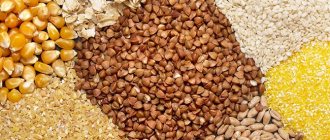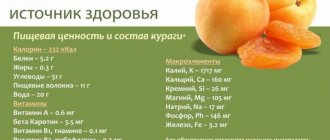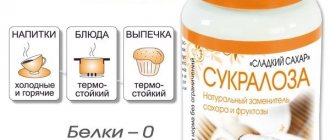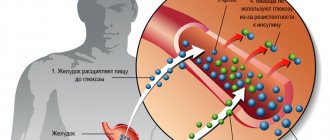Millet for type 2 diabetes
Millet is the peeled kernels of millet.
An aromatic and tasty porridge is prepared from incredibly healthy cereals. Millet is used for weight loss, cleansing, and healing the body. In addition, millet is recommended for consumption by diabetics. The patient's diet should contain complex carbohydrates, which restore normal brain function. Millet porridge is slowly broken down into simple sugars by the intestines, and the resulting glucose gradually penetrates the blood. Porridges are cooked from cereals, casseroles and dietary soups are prepared. But in order for millet to bring only benefits to a diabetic, you need to know everything about its benefits and harms, the rules of selection and preparation.
Composition and calorie content of millet
Millet for diabetes is a necessary product that contains complex carbohydrates, fats, proteins, vitamins, and microelements. In addition, cereals are rich in fiber, which normalizes the functionality of the digestive tract. With regular use, intestinal motility improves, bowel movements improve, and abdominal discomfort disappears.
The energy value of dry cereal is 342 kcal/100g, after cooking it decreases to 90 kcal/100g. 100 g of the finished product contains:
- carbohydrates – 66.5 g;
- proteins – 11.5 g;
- fat – 3 g.
Before consuming any product, a diabetic should know its glycemic index. GI is a digital value that reflects the rate of absorption of carbohydrates from cereals into the body and the degree of increase in the concentration of glucose in the blood. The GI of millet is 71. However, despite the fact that this indicator is quite high, purified millet is classified as a dietary product. For this reason, the product is included in the diet of patients with diabetes of any type (first, second).
Millet cereal contains the following components:
How to cook porridge correctly?
Millet is ok for diabetes, but it needs to be prepared correctly so that all the beneficial components inside are preserved. What should you follow when cooking wheat porridge?
- It is best to cook it in water. If you really want to add milk, you can do this at the end of cooking. It must be non-greasy.
- Rinse the cereal before cooking. Why is this necessary? All cereals are saturated with starch, which belongs to polysaccharides (also sugar). It envelops every grain and can be removed by grinding the grain in a colander or with your hands under running water.
- Of course, no sugar! With your doctor's permission, you can add 1 spoon of honey (necessarily natural, not artificial) to the finished dish.
- Avoid fully cooking the porridge. An excellent cooking method would be steaming; it helps seal all the microelements and vitamins inside. To do this, you need to pour a portion of the cereal with hot milk (only if you can have it) or water. Another good option would be to fill it with kefir.
Another important point is to minimize the amount of butter or remove it altogether. To make the porridge more nutritious and its taste more interesting, you can add various grated vegetables and fruits to it. Pumpkin and apples, pear, sea buckthorn and viburnum go very well with wheat porridge.
Remember that if you wash down your porridge with kefir, low-fat yogurt or milk, the overall glycemic index of the food increases. If they accompany food, the porridge should have a low GI.
You should eat no more than 200-300 grams (about 5 tablespoons) at a time. If the porridge seems completely unsweetened, you can add (just do not overuse) a sweetener or xylitol.
Beneficial properties of cereals for diabetes
Endocrinologists recommend that diabetics include millet porridge in their diet, because it contains valuable substances that improve the functioning of the entire body. If you regularly consume millet dishes, the patient becomes more resistant to infectious diseases, and the protective function of the dermis improves. As a result, damage heals faster and the skin is moisturized.
Beneficial properties of purified millet for diabetics:
- Millet consists of more than 65% starch; this complex saccharide prevents a sharp increase in blood glucose concentrations. This component saturates cells with energy and improves their activity.
- Fats also charge the body with energy and give a feeling of fullness for a long time.
- Thanks to pectin fibers and fiber, carbohydrates are slowly absorbed into the intestines. These components cleanse the body of toxic substances due to their diuretic and diaphoretic effects.
- Fat deposits are burned faster, as a result the patient’s weight decreases.
- The functionality of the pancreas improves.
- The functioning of the nervous system is normalized, sleep disorders disappear.
- Liver function is restored.
- Blood vessels are cleared of low-density lipoproteins (“bad” cholesterol).
Due to the high content of minerals and vitamins, millet is recommended to be consumed every day for type 2 and type 1 diabetes. Millet will not cure the disease, but it will improve the functioning of the whole body. As a result, the patient's condition will improve significantly.
Millet is a hypoallergenic product. Cereals contain a lot of protein, but despite this, they do not provoke an allergic reaction. With regular consumption of millet dishes, the patient's weight decreases and his condition improves.
Useful properties and composition of millet
Millet has long been the mainstay of the diet of the middle class and serfs in Rus'; it has been eaten since time immemorial. This porridge can enrich the body with useful substances and, most importantly, it does not cause sudden weight gain, which is very important if you have type 2 diabetes, since this disease is very often associated with obesity.
The chemical composition of millet includes the following components:
- About 70% starch. This complex saccharide prevents a sharp jump in glucose, while being nutritious enough for the normal functioning of cells in the body.
- 10–15% proteins. This component is represented by amino acids, which provide essential benefits to the body.
- 2–4% fat. This is a reserve source for ATP molecules. Fats provide the body with energy, which ensures that you are full of food for a long time.
- 1% fiber and pectin fibers. The presence of these substances can slow down the absorption of carbohydrates and cleanse the intestines of waste and toxins. This is very important for obese patients.
- Vitamins B1, B2 and PP.
- Minerals: potassium, phosphorus, magnesium, iodine, zinc, etc.
Such a rich composition clearly explains why millet porridge is allowed for diabetics, and makes it very popular and popular when creating menus.
Selection and storage of millet
If you want to choose extremely healthy and fresh cereals, then pay attention to the following points:
- best before date;
- shade of grains;
- appearance of the cereal.
When choosing, be sure to look at the production date and shelf life of the millet. It is better to buy fresh cereals, and not those that will soon expire. Otherwise, after a while the porridge will be bitter and have an unpleasant aftertaste.
Bright yellow millet is considered the most delicious and healthy. It happens that dry cereals were yellow, but after cooking they turned pale. This is because the product is expired or was stored under improper conditions.
In addition, you should pay attention to the appearance of the cereal in the package. There should be no foreign matter or dirt. If millet is sold by weight, be sure to smell it; the aroma should not be unpleasant.
To store cereals, you can use a fabric bag, a dry plastic or glass container with a hermetically sealed lid. Store the product in a place protected from sunlight.
How to store
It is better not to buy grain in large quantities. It contains fats that tend to oxidize quickly, as a result of which millet acquires some bitterness. Once you unpack the pack, pour the product into a ceramic or glass container. It must be completely dry and sealed tightly. Cereals should be stored in a dry, dark place. Under such conditions, the product will not lose its taste for 4 months.
Important! If during cooking the millet has lost its color or turned pale, it means that it is expired or was stored in improper conditions.
Cooking rules
In order for millet porridge to show only its best qualities, diabetics need to follow the rules for its preparation. The main condition is that millet dishes are prepared in water; in rare cases, it is allowed to use low-fat milk diluted with water.
It is prohibited to use sugar when preparing diabetic dishes. It is also not recommended to add butter, but it is possible. The maximum dose of oil is no more than 10 g.
Sweetening the dish is allowed with the help of sweeteners. However, before using sorbitol, you should consult your doctor.
If type two diabetes is diagnosed, the patient can consume 25 g of ground millet daily. To make flour, the grains are first washed, then dried and ground into powder. Wash down the flour with filtered water. Treatment lasts 30 days or more.
To prepare crumbly porridge, pie or casserole, use polished cereal. For dishes with a liquid and viscous consistency, ground millet is used. If there are no contraindications, then prepare an unusual dish from millet-dranets (whole seeds, peeled from the flower film).
Methods for preparing millet porridge:
- Porridge made from crushed cereals. Add some salt to the water, put it on the fire, when it boils, add pre-washed cereal (220 or 440 g) to it. Cook the porridge until tender (at least 20 minutes). To prevent it from sticking to the bottom, you need to stir it. The thickened porridge is placed in the oven for 40 minutes to steam.
- Whole grain porridge. Pour 220 or 440 g of cereal into boiling water and cook for 30 minutes, remembering to stir the dish. The finished porridge is steamed in the oven.
- For type 2 diabetes, porridge is cooked twice. The washed cereal is poured with cold water and cooked until half cooked. Then the water is drained, new is poured in and the dish is cooked until cooked. For 220 g of cereal you will need 500 ml of water. After the water boils, cook the porridge for 20 minutes.
- Porridge with pumpkin. Take 700 g of pumpkin, peel the skin, remove the grains, chop, and boil for 15 minutes. Then mix the pumpkin with semi-finished millet, pour in skim milk, cook for another half hour, then remove the dish from the heat and let it brew for 10 minutes under the lid.
Millet is supplemented with vegetables, fruits or berries (tomatoes, eggplants, zucchini, apples, pears, viburnum, sea buckthorn, etc.). However, preference should be given to low-calorie and unsweetened varieties.
Treatment of diabetes mellitus with millet
There is one popular method that, according to user reviews, helps get rid of the symptoms of T2DM.
The recipe is as follows: wheat grits are washed and dried, and then ground to flour.
The finished substance is taken 1 tablespoon per day and washed down with the same amount of milk. This treatment lasts at least a month.
Recommendations for preparing a diet
In the nutrition plan, the main components of food should be in the following ratio:
- Carbohydrates - about 60%;
- Fats - no more than 24%;
- Proteins - 16%.
Every day you need to eat foods that are rich in fiber and dietary fiber. They are not digested in the gastrointestinal tract, but give a feeling of fullness. Their benefit is to reduce the absorption of fat and glucose, so the need for insulin in the body is automatically reduced. Every day you need to consume at least 40 grams of such fiber. They can be obtained from:
- Gribov;
- Pumpkins;
- Beans;
- Bran;
- Wholemeal oat and rye flour.
All dietary fiber should come in equal quantities from cereals and vegetables/fruits.
Recipes with wheat porridge
You've already read about pumpkin-wheat porridge. Here's her recipe:
- 200 grams of millet;
- 200 ml milk and water;
- 100 g pumpkin;
- Xylitol or sweetener as desired.
The porridge is washed first. After this, it is filled with water and brought to a boil, placed in a colander and washed again. Fill it with water again, at this point a sugar substitute is added (you can use stevia).
The porridge is brought to a boil, then the foam is removed. Everything is cooked for about 10 minutes. At this time, the pumpkin is peeled and cut into cubes (about 3 cm). It is added to the porridge and it is cooked for another 10 minutes (do not forget to stir). Ready!
Another recipe involves cooking porridge in the oven. To do this you need:
- 1 apple;
- 1 pear;
- Lemon zest (half is enough);
- A pinch of salt;
- 250 grams of millet;
- 2 tsp fructose;
- 300 ml skim or soy milk.
The millet is also washed under running water, then poured into a pan. Milk is poured there and fructose is added. All this is brought to a boil, after which it is immediately removed from the stove. The pear and apple are peeled and cut into cubes (the harder the variety, the smaller the cube). They and lemon zest are added to the porridge, the mixture is thoroughly mixed. Then it is poured into a heat-resistant container, covered with foil and sent to the oven, preheated to 180 degrees. The dish takes 40 minutes to prepare. Bon appetit!
Traditional millet recipes for diabetics
For type 2 diabetes mellitus, millet cereal is used to prepare traditional medicines.
For example, to maintain normal glucose levels, it is recommended to prepare an infusion of millet, which is taken orally (orally). To do this, they use seeds in a shell, because it is the husk that contains useful substances. First, 220 g of cereal is washed, dried, and then poured with boiled water in a ratio of 1:2. Cover the product with a lid and leave for 120 minutes. Then the infusion is filtered through cheesecloth and consumed. Daily dosage – 100 ml three times after meals. Treatment lasts on average 2 weeks.
Purified millet helps eliminate external problems common to diabetics. We are talking about dry, inflamed skin with a purulent rash. To speed up their healing, use an alcoholic infusion of millet. To prepare it, pour 50 g of seeds into 500 ml of alcohol and leave for 2 weeks in a cool place away from sunlight. Then the liquid is filtered and the inflammation is treated twice or thrice in 24 hours.
However, before using any folk remedies, you should consult an endocrinologist.
Rules and recipes for preparing porridge for diabetics
A person suffering from diabetes should cook millet porridge in water. As a last resort, you can use milk, but only low-fat milk. You cannot add sugar, but if you really want to sweeten the dish, you can add a substitute after consulting with your doctor.
It is best to cook porridge without additives.
Even 2 tbsp. l. Such a product, eaten daily, will significantly improve the condition of the body. Also sometimes pumpkin, which is a dietary product, as well as nuts or cottage cheese are added to the porridge. Before you start cooking, the millet needs to be sorted and washed, since even the most seemingly clean grain often contains fragments of husk.
Find out also about the benefits of sauerkraut for type 2 diabetes.
Without additives
This is the simplest cooking method, for which you will need millet (200 g), water and a pinch of salt (1/4 tsp). People suffering from type 2 diabetes are recommended to boil the cereal twice. First, whole grains are poured with cold water. Place the pan on low heat and bring the grains until half cooked.
Then the remaining liquid must be drained. Water (500 ml) is again added to the semi-cooked porridge, salted, put on fire, and, stirring continuously, brought to a state of complete readiness. The process lasts about 20 minutes, after which the pan must be removed from the heat, wrapped in a blanket and the food steamed for 2 hours.
With pumpkin
Pumpkin will give millet porridge a pleasant taste and aroma. This ingredient will help diversify your diet and, moreover, will also bring considerable benefits. The vegetable has a positive effect on visual acuity, intestinal microflora, stabilizes blood pressure, improves blood composition and improves immunity. In general, the benefits of this miracle vegetable are considerable. Therefore, it can be added to porridge.
To prepare you will need the following components:
- millet: 100 g;
- low-fat milk: 2-3 glasses;
- fructose: 2 tbsp. l.;
- vanillin: ¼ tsp;
- butter: 30 g;
- salt: ¼ tsp;
- pumpkin: 700 g.
Did you know? In the countries of India and Africa, millet began to be cultivated more than 7 thousand years ago.
Cooking porridge consists of the following steps:
- Pour milk into the pan. The recipe indicates 2-3 glasses so that everyone can choose the most suitable option for themselves - the more liquid, the more boiled the porridge will be. If you like a crumbly consistency, 2 glasses of milk is enough.
- Add the prepared millet, place the pan on low heat and, stirring, bring to a boil.
- Peel the pumpkin, cut into small cubes, and add to the porridge. Set the heat to the lowest setting on the stove and cook until the contents have completely thickened. All this time you need to stir the porridge, otherwise it will burn very quickly.
- Add fructose, vanillin, oil, salt. Stir, cover and remove from heat. At this stage, you can, if desired, add raisins or chopped dried apricots.
- Wrap the pan with porridge in a blanket and leave for 4-5 hours. You can prepare the porridge the night before. Then in the morning you will have a delicious breakfast waiting for you.
Video: delicious millet porridge with pumpkin
Negative effects of millet
The harm of millet appears in those patients who have contraindications to this product. Cereals are prohibited from being consumed in the following cases:
- Chronic gastritis with high acidity.
- Inflammation of the colon.
- Predisposition to constipation.
- Autoimmune thyroid diseases.
If the problems described above are present, it is better for patients to give up millet. Otherwise, peeled millet provokes a burning sensation behind the sternum or worsening inflammation.
Although millet contains coarse fibers that stimulate intestinal motility, diabetics with constipation should avoid millet. Cereals will not make defecation easier, but will only worsen the problem.
The benefits and harms of millet for diabetics
Non-insulin-dependent diabetes is characterized by the insensitivity of body cells to insulin, which causes hyperglycemia. High blood sugar has a negative impact primarily on a person’s blood vessels and also leads to obesity. Diet is the main method of treating this endocrine disease. Is it possible to eat millet if you have type 2 diabetes? The requirements for diabetic products are strict: they must be low in calories and contain the necessary range of nutrients.
Benefits, harms and delicious recipes for millet porridge
As you know, the presence of diabetes mellitus implies the introduction of a special diet that will make it possible to maintain blood sugar levels at an optimal level.
As part of the presented diet, it is entirely permissible to consume millet porridge, which includes many useful components and microelements. However, preliminary consultation with a specialist is strongly recommended before starting to treat the first or second type of the disease presented.
The benefits of cereals
Anyone who is wondering whether the presented product can be eaten should know why exactly it is useful. First of all, this is relevant due to the rapid absorption by the human body, as well as by the entire digestive system.
That is why millet is strongly recommended not only for diabetes, but also for the development of other diseases, for example, gastritis or even gastric ulcers, duodenal ulcers. Next, I would like to draw attention to the fact that wheat porridge is more than acceptable for diabetics, because it contains a significant amount of amino acids.
In addition, we should not forget that in diabetes mellitus components such as vitamins B1, B2 and PP are extremely important. No less significant is the presence of phosphorus, potassium and magnesium.
It is noteworthy that it is millet, as well as millet, that help remove many undesirable substances and components from the human body.
We are talking about toxins, as well as some other elements that negatively affect all body functions. However, in order to achieve a similar effect, it is strongly recommended to first discuss all the nuances of use with a specialist.
Features of use
It is strongly recommended to discuss the use of millet with a specialist in advance. In order to improve the functioning of a diabetic’s body, it is strongly recommended to use one of the proposed methods. Speaking about this, pay attention to the fact that it is strongly recommended to rinse with maximum care, as well as dry and grind the millet to the state of flour.
I would like to draw attention to the fact that the beneficial characteristics of cereals are directly dependent, first of all, on its variety. That is why, as experts note, you need to be able to not only prepare porridge correctly, but also select the presented cereal.
It must be remembered that millet can be presented not only in the usual yellow color, but also in white or gray. Polished millet should be considered the most useful and high-quality. It is with its help that you can prepare the most crumbly porridge, which is highly recommended for consumption for a disease such as diabetes.
I would like to draw your attention to the fact that there are some standards for the use of the presented product. In particular, when talking about this, they pay attention to the fact that it is best for diabetics to prepare millet porridge with milk or water.
In this case, it would be best to season it with butter. It should be borne in mind that it is not advisable to purchase a significant amount of millet cereal for type 2 diabetes, because it is characterized by an unpleasant property, namely the fact that over time it begins to acquire a bitter taste.
Taking this into account, it is strongly recommended for all cases and even for completely healthy people to purchase a small amount of millet and immediately prepare porridge from it.
Contraindications and additions
In addition to the positive characteristics, wheat porridge, as well as cereals for diabetes, is associated with certain contraindications. Speaking about this, pay attention to the following cases and diagnoses:
- tendency to constipation;
- any trimester of pregnancy;
- decreased levels of stomach acidity.
Another case that is strongly recommended to pay special attention to is hypothyroidism, which can be experienced for a fairly long period of time without any symptoms.
That is why it is strongly recommended to first consult with a specialist who will explain who can and should use the presented product.
However, the presented theory is not supported by all doctors. Thus, millet can and should even be used for diabetes.
This will be the key to maintaining optimal health, but we should not forget that all contraindications must be taken into account in order for the product to be truly approved. If you eat this porridge according to all the rules, following the general therapeutic course, then you can talk not only about a significant improvement in your well-being, but also about the normalization of blood sugar levels.
Non-insulin-dependent diabetes is characterized by the insensitivity of body cells to insulin, which causes hyperglycemia. High blood sugar has a negative impact primarily on a person’s blood vessels and also leads to obesity.
Diet is the main method of treating this endocrine disease. Is it possible to eat millet if you have type 2 diabetes? The requirements for diabetic products are strict: they must be low in calories and contain the necessary range of nutrients.
Properties of millet
The benefits and harms of millet for diabetics can be considered using its properties as an example. Millet is hulled millet. Most often used as a cereal. The oldest cereal product along with wheat. It contains mainly complex carbohydrates. Millet porridge prepared with water or milk for type 2 diabetes mellitus satisfies the following qualities:
- easy to digest;
- saturates well due to prolonged digestion;
- does not increase blood sugar;
- promotes insulin production;
- helps burn fat.
| Bread units (XE) | 6,7 |
| Calorie content (kcal) | 334 |
| Glycemic index | 70 |
| Proteins (g) | 12 |
| Fat (g) | 4 |
| Carbohydrates (g) | 70 |
Bread unit (XU) is a special symbol for calculating a diet for diabetes. 1 XE = 12 g of carbohydrates with fiber. A diabetic can consume 18-25 XE per day, divided into 5-6 meals.
The glycemic index is a relative unit of the rate of absorption of glucose from foods. This scale ranges from 0 to 100. A zero value means the absence of carbohydrates, a maximum value means the presence of instantly soluble monosaccharides. Millet is a high GI food.
The calorie content or the number of calories that the body receives when consuming foods is quite high for millet. But when preparing millet porridge in water, it drops to 224 kcal.
In terms of quantitative amino acid content, millet is superior to rice and wheat. A few tablespoons of dry product is a third of the daily requirement, including both essential and essential enzymes.
Fats are rich mainly in polyunsaturated acids, such as linoleic, linolenic, oleic (70%). These acids are necessary for regulating the functioning of the brain, heart, pancreas, and liver.
The composition of carbohydrates is dominated by starch (79%) and fiber (20%). The natural polysaccharide is slowly absorbed during digestion due to its poor solubility. This has a beneficial effect on the feeling of fullness after taking wheat cereal.
In the initial stage of diabetes, the body still produces sufficient, and sometimes excessive, amounts of insulin. As the disease progresses, excessive secretion of the hormone has an inhibitory effect on parenchyma cells, and this leads to the need for insulin injections.
Moreover, excess glucose inevitably leads to injury to blood vessels. Therefore, diabetics (especially at the onset of the disease) need to make every effort to reduce the secretory function of the liver and streamline carbohydrate metabolism.
For people with diabetes, all food products are divided into several groups. This division occurs based on the effect of certain foods on blood sugar levels.
The body is replenished with carbohydrates, vitamins, microelements, and dietary fiber through starch-containing foods. These include the well-known pumpkin.
Beneficial features
Pumpkin is considered very useful for type 2 and type 1 diabetes, as it normalizes sugar levels and does not contain many calories. The latter quality is very important in diabetes, since it is known that one of the main causes of the disease is obesity.
In addition, pumpkin for diabetes increases the number of beta cells and affects the regeneration of damaged pancreatic cells. Such positive properties of the vegetable are due to the antioxidant effect that comes from the insulin-stimulating molecules D-chiro-inositol.
Increased insulin production, in turn, helps reduce blood sugar levels, which reduces the number of oxidative oxygen molecules that harm beta cell membranes.
Eating pumpkin allows a diabetic to:
- Prevent atherosclerosis, thereby avoiding vascular damage.
- Prevent anemia.
- Accelerate the removal of fluid from the body.
- Thanks to the pectin found in pumpkin, it lowers cholesterol.
The removal of fluid, the accumulation of which is a side effect of diabetes, occurs due to the raw pulp of the vegetable.
Pumpkin contains all sorts of beneficial elements:
- Vitamins: group B (B1, B2, B12), PP, C, b-carotene (provitamin A).
- Microelements: magnesium, phosphorus, potassium, calcium, iron.
People with type 2 diabetes can eat pumpkin juice, pulp, seeds and oil.
Pumpkin juice helps remove toxins and toxic substances, and the pectin it contains has a beneficial effect on blood circulation and reduces cholesterol levels in the blood; cholesterol-lowering drugs can be used in combination.
Important! You can drink pumpkin juice only after examination by a doctor. If the disease is complex, then pumpkin juice has contraindications!
Properties of millet
The benefits and harms of millet for diabetics can be considered using its properties as an example. Millet is hulled millet. Most often used as a cereal. The oldest cereal product along with wheat. It contains mainly complex carbohydrates. Millet porridge prepared with water or milk for type 2 diabetes mellitus satisfies the following qualities:
- easy to digest;
- saturates well due to prolonged digestion;
- does not increase blood sugar;
- promotes insulin production;
- helps burn fat.
This feature of millet is explained by its composition (per 100 g):
Bread unit (XU) is a special symbol for calculating a diet for diabetes. 1 XE = 12 g of carbohydrates with fiber. A diabetic can consume 18-25 XE per day, divided into 5-6 meals.
The glycemic index is a relative unit of the rate of absorption of glucose from foods. This scale ranges from 0 to 100. A zero value means the absence of carbohydrates, a maximum value means the presence of instantly soluble monosaccharides. Millet is a high GI food.
The calorie content or the number of calories that the body receives when consuming foods is quite high for millet. But when preparing millet porridge in water, it drops to 224 kcal.
In terms of quantitative amino acid content, millet is superior to rice and wheat. A few tablespoons of dry product is a third of the daily requirement, including both essential and essential enzymes.
Fats are rich mainly in polyunsaturated acids, such as linoleic, linolenic, oleic (70%). These acids are necessary for regulating the functioning of the brain, heart, pancreas, and liver.
The composition of carbohydrates is dominated by starch (79%) and fiber (20%). The natural polysaccharide is slowly absorbed during digestion due to its poor solubility. This has a beneficial effect on the feeling of fullness after taking wheat cereal.
Fiber in the form of pectin is the coarsest and most difficult to digest component in millet. Fibers ensure accelerated intestinal motility and cleansing of toxins.
Millet contains B vitamins, approximately one fifth of the daily value (per 100 g), which affect cardiovascular and muscle tissue:
A wide range of macro- and microelements contribute to the functioning of the hematopoietic and immune systems, metabolism in tissues and blood vessels.
Millet combines a variety of useful components with high calorie content and GI.
How exactly is millet useful for a person with diabetes?
Why is millet suitable?
Millet, like wheat, belongs to the Poa family and is the oldest agricultural crop. Despite its close relationship, the properties of millet are very different from those of wheat, so its bright yellow grains are well suited for the diet of people with diabetes.
The main advantages of millet include the following:
- very few fast carbohydrates;
- takes a long time to digest;
- creates a feeling of pleasant satiety;
- activates the breakdown of fat;
- does not cause a sharp rise in blood sugar immediately after eating.
When planning a daily menu, people with diabetes have to constantly calculate many indicators. “Bread units (XU)” are subject to accounting: 1 XU is equivalent to 12 grams of carbohydrates, taking into account dietary fiber, or 20 grams of bread.
The glycemic index is the rate of absorption of sugar from the food eaten. The scale starts from 0 and ends at 100.
For 100 grams of millet, indicators important for diabetes have the following values:
- glycemic index – 70;
- bread units – 6.7;
- calorie content – 334 kilocalories;
- carbohydrates – 70 grams;
- proteins – 12 grams;
- fats – 4 grams.
And although, as can be seen from this table, the calorie content and glycemic index of millet are very high, it can be included in the diabetic menu.
By the way, the calorie content when cooking porridge is greatly reduced, and 100 grams of the finished dish, as a rule, contains about 224 kilocalories.
As for amino acids, there are much more of them in millet than in rice or wheat.
The fats contained in this cereal are rich in oleic, linolenic and linoleic acids, which are necessary for the normal functioning of the brain, pancreas, liver, and heart.
The high starch content in millet gives a long-lasting feeling of satiety, and the abundance of fiber stimulates intestinal peristalsis. All this has a beneficial effect on the condition of the gastrointestinal tract.
Useful qualities of millet for diabetes
Wheat cereal proteins contain the most important essential amino acid - leucine (30% of the norm), due to which protein metabolism occurs and blood sugar is reduced. This amino acid enters the body only from the outside. Of the non-essential amino acids, proline plays an important role, an enzyme that maintains muscle tone and promotes the healing of ulcers.
Of the mineral composition of millet, some of the elements have a great effect on carbohydrate metabolism and diabetic complications.
- Vanadium. Content – 425% of the required amount. Catalyst for cholesterol synthesis.
- Silicon - 251%. Controls the elasticity of blood vessels.
- Cobalt - 71%. Included in B12 and insulin.
- Manganese - 63%. Strengthens the effect of insulin, maintains cholesterol levels, regulates lipid metabolism.
- The combination of magnesium, zinc, chromium, and selenium promotes the functioning of the pancreas.
- Magnesium - 31%. Prevents vascular pathologies.
Unsaturated acids omega-3 and omega-6 reduce cholesterol levels in the blood and prevent the development of atherosclerosis. The complex of these acids is called vitamin F, which regulates blood pressure and blood concentration levels, thereby protecting the heart muscle.
Of the B vitamins for type 2 diabetics, the most important is the presence of B9, which affects carbohydrate and fat metabolism.
Starch and pectin, long-digesting carbohydrates, do not cause a sharp increase in blood glucose.
The presence of these properties makes millet a must-have product in the diet of diabetics.
Contraindications
The cobalt and boron contained in millet are a prerequisite for contraindications for the thyroid gland and glycemia. Cobalt tends to inhibit the absorption of iodine, and boron reduces the activity of vitamins B2, B12, adrenaline and raises blood sugar.
Millet contains a moderate amount of purines, the final metabolic process of which is uric acid (62 mg per 100 g). When there is a metabolic disorder, the level of uric acid in the blood increases, which is deposited in the form of salts in the joints and provokes the development of gout.
The content of oxalic acid is insignificant, about 5% of the permissible daily allowance, but can increase urea salt deposition.
If type 2 diabetes has concomitant diseases such as hypothyroidism and gout, then millet porridge is contraindicated. It is not recommended if you have chronic constipation and low stomach acidity.
Millet diet
Despite the high glycemic index and calorie content, millet porridge is a necessary dish on the diabetic’s table. “Slow” carbohydrates do not cause hyperglycemia, muffling the feeling of hunger. In addition, the components contained in millet make treatment of diabetes mellitus with millet effective.
Recipes for making millet porridge:
- Dry cereal (100 g) must first be soaked under running cold water and poured with boiling water (2-3 minutes) to remove the bitterness. The ratio of water and dry product is 2:1. Pour the cereal into boiling water and cook at low temperature for 15-20 minutes. Add salt to taste. Add a teaspoon of butter.
- During the cooking process, add the same amount of peeled and finely chopped pumpkin to the semi-finished porridge. Add salt. Bring to readiness.
- 5 minutes before the end of cooking the porridge, add washed and chopped prunes and dried apricots (a tablespoon of each).
You should not add sugar or sorbents. Crumbly millet porridge is tasty without them if you add fresh fruits or berries. In this case, it acts as a dessert. Without them - as a side dish for any meat or fish dish.
Millet is a healthy dietary product that will help maintain blood glucose levels at the proper level.
Millet porridge for type 2 diabetes: a recipe for diabetics
Diabetes mellitus is rightfully considered an insidious disease, and upon hearing such a diagnosis, lifestyle correction in this case is inevitable. Consuming only the right foods that do not provoke an increase in blood glucose is the key to health.
Healthy carbohydrates contained in porridge, including millet, are the main source of required energy for a patient with type 1 and type 2 diabetes.
Type 2 diabetes is characterized by the fact that excess sugar does not negatively affect the functioning of the pancreas. However, smooth muscle cells do not absorb sugar at the same level.
If you have diabetes, you can and should eat millet porridge, as it contains many useful mineral elements and carbohydrates necessary for the full functioning of the body.
It is necessary to figure out what benefits lie in millet porridge, and why is it considered so useful? In addition, you need to understand whether pumpkin porridge is also healthy, and is it possible to eat it if you have type 2 diabetes?
The benefits of millet for diabetes
Millet is a grain crop, the processing of which produces millet, from which porridge is cooked and other dishes are prepared.
The benefits of this product are considered undeniable, especially for type 1 and 2 diseases. When a doctor diagnoses a patient with diabetes, he will necessarily recommend changes in diet, and, of course, will advise including as many different cereals as possible in your daily diet.
Millet is considered the healthiest product because mature grains contain a huge amount of carbohydrates, which supply diabetics with much-needed energy.
Another advantage is that it contains exclusively complex carbohydrates, and, after eating porridge, the patient will not think about food for a long period of time, which has a positive effect not only on the patient’s condition, but also on his weight.
Millet contains the following beneficial components:
- Vitamin B1 helps normalize the functionality of the central nervous system, helps the body fight stressful situations and nervous tension.
- Vitamin B2 improves skin and scalp hair.
- Vitamin B5 is vital for bone health.
- Without vitamin B6, the cardiovascular system will not function fully.
- Nicotinic acid helps improve the condition of blood vessels.
Wheat porridge for diabetes enriches the patient's body with potassium, fluorine, zinc, magnesium, iron, copper and manganese. It is precisely due to its beneficial qualities and unique composition that porridge is resolved with such a disease, regardless of its type.
Harm of millet for diabetes
Millet porridge has a small list of contraindications, however, they still exist.
For example, if a person with diabetes also has low acidity of gastric juice, or there is a tendency to constipation, then wheat porridge should be consumed in limited quantities, because it contains a lot of fiber. If the patient cannot imagine life without this product, then porridge must be introduced into the diet gradually, starting with once a week, and it is important to consume it exclusively in small portions.
However, diabetes mellitus is not always the only disease; concomitant pathologies are often observed, for which porridge will not be a “cure”.
It is worth reducing the consumption of porridge, or completely eliminating it from the diet in the following situations:
- If a pregnant woman has gestational diabetes, then porridge is consumed with extreme caution and no more than twice a week.
- Some gastrointestinal diseases can become an obstacle to the variety of millet porridge menu. For example, inflammation of the upper intestinal region.
- In case of diabetes mellitus type 1 and 2, representatives of the stronger sex should not overuse porridge, as it has a negative effect on male strength.
- If the patient has a history of hypothyroidism, since certain components of millet do not allow iodine to be fully absorbed.
It is advisable to say that, despite the high caloric content of the product (348 calories per 100 grams), millet is still one of the foods that a diet allows for high sugar levels, so you can eat it with confidence if you have diabetes, without being afraid of gaining excess weight.
What are the benefits of wheat porridge for type 2 diabetes?
- Strengthens muscles;
- Reduces % body fat;
- Removes various allergens and toxic substances.
Wheat cereal comes in different types. The most beneficial for diabetics will be porridge made from pre-polished millet.
Doctors do not recommend consuming this type of cereal for some categories of patients. These include:
- Having a tendency to constipation;
- People with low stomach acidity;
- Patients with hypothyroidism;
- Pregnant and breastfeeding women.
Popular recipes
As the information above shows, millet is an approved product for type 2 diabetes, and it can bring many benefits to the sick body.
However, before we talk about the most delicious and healthy recipes, it is necessary to emphasize that when choosing cereals, its color is of no small importance - the yellower the cereal, the tastier the porridge will be.
Gourmets say that kernels that are too light in the finished dish turn into something lean and tasteless. The issue of cleansing grains is also considered important; if they have seed or fruit shells, they will be bitter. Therefore, it is necessary to clean them before cooking.
Two types of diabetes (first and second) require preparing millet porridge as follows:
- Wash the cereal kernels under running water, transfer them to an enamel container and fill with cold water.
- Cook until half cooked.
- Afterwards, drain the water, add clean water and cook until fully cooked.
Fresh or boiled vegetables (you can also steam them) would be an excellent side dish for this porridge. If you add fresh fruits to the porridge, as well as some dried fruits, it will become an excellent dessert. By studying recipes for type 2 diabetics, you can find new and tasty dishes that are healthy for the body.
Millet porridge with pumpkin is prepared as follows:
- Peel the pumpkin, remove the grains, cut 700 grams of the product into small pieces and place in a saucepan with water, cook for 15 minutes.
- Process the millet, cook until half-cooked, then drain the water and add porridge to the pumpkin.
- Add skim milk - 250 ml, then cook everything for half an hour.
- Cover the thickened porridge with a lid and leave to evaporate for another 15 minutes.
Millet porridge for type 2 diabetes has undoubted benefits and will become a lifesaver for every patient who wants to eat not only healthy, but also tasty.
Pumpkin is an equally healthy product, so there are a huge number of delicious recipes based on it. To prepare diabetic porridge with milk, you need to chop one kilogram of pumpkin and boil until completely cooked, add skim milk, a small amount of rice to it, and cook everything until completely cooked.
Before serving, pumpkin porridge can be decorated with dried fruits, chopped nuts and sprinkled with a little cinnamon.
In any case, if you eat right and follow all the recommendations of your doctor, then even with diabetes, drug therapy can be minimized.
There are many recipes on the Internet, but the final dish does not always turn out really tasty. Share your proven recipes to complement the review and diversify the diet of diabetics!
Healthy recipes with cereals
For diabetics, millet porridge with pumpkin will be useful, the preparation of which should involve the use of a whole list of ingredients. Speaking of this, pay attention to the use of 200 gr. millet, 200 ml water and milk, 100 gr. pumpkin, as well as a small amount of any natural sugar substitute. You can completely refuse to use it.
How to take turmeric for type 2 diabetes
At the initial stage, it is recommended to thoroughly rinse the millet for diabetics. You can also pour water over the cereal and bring it to a boil, then drain it in a colander and rinse thoroughly under running water until it is 100% clean. The millet prepared in this way is filled with water and milk, and a sugar substitute, for example, stevia, is added to it. After this you will need:
- bring the porridge to a boil, after which the foam is removed and simmered over low heat for 10 minutes;
- the pumpkin is peeled and cut into proportional cubes of three cm, added to millet porridge and boiled for another 10 minutes under a closed lid;
- It is recommended to stir the cereal from time to time to prevent sticking to the walls of the pan.
Usually it takes no more than 20 minutes to prepare porridge, after which the dish is allowed to brew, cool slightly, and can be considered ready to eat. Using a similar recipe, you can prepare wheat porridge, which is also useful for diabetes. Do this no more than once or twice a week.
The following recipe involves preparing fruit millet porridge in the oven. All products used in this case can boast a glycemic index of less than 50 units. Speaking about the ingredients, pay attention to the use of one apple and pear, the zest of half a lemon, 250 gr. millet. No less important components will be 300 ml of soy milk (it is acceptable to use the low-fat name), salt on the tip of a knife, as well as two tsp. fructose.
In order for a dish to actually be included in a diabetic diet, it is necessary to follow certain recommendations:
- the millet is washed under running water, a small amount of milk is poured in, some salt is added and fructose is added;
- bring the dish to a boil and then turn it off;
- Apples and pears are peeled and cored, then cut into small cubes;
- add them together with lemon zest to the porridge, mixing thoroughly.
Allowed amount of salt intake for diabetes
It is strongly recommended to pay attention to the fact that you need to place the porridge in a heat-resistant glass container. Next, cover the whole thing with foil and place it in a preheated oven to 180 degrees, this should be done for no more than 40 minutes. Such millet porridge with fruit can be eaten as a breakfast as a complete dish.
The benefits and harms of millet for diabetes
I have been studying the problem of DIABETES for many years. It's scary when so many people die and even more become disabled due to diabetes.
I hasten to report good news - the Endocrinological Research Center of the Russian Academy of Medical Sciences managed to develop a medicine that completely cures diabetes mellitus. At the moment, the effectiveness of this drug is approaching 100%.
Another good news: the Ministry of Health has achieved the adoption of a special program under which the entire cost of the drug is compensated. In Russia and the CIS countries, diabetics up to
On July 6th they can receive the product -
FREE!
Millet for diabetes
Millet is one of the first grain plants that man began to cultivate. It is from these grains that the processing process produces flour, which is well known to modern man. This is not only nutritious, but also very healthy cereal. Its medicinal properties were already known in ancient Mongolia and China.
Millet is a good source of magnesium, which increases the efficiency of insulin, preventing the development of diabetes. Studies have shown that people who regularly supply their bodies with magnesium have a 30% lower risk of developing type 2 diabetes.
Read more about the benefits of millet for diabetes and its prevention with the help of this cereal further in the materials I have collected on this topic.
What are the benefits of millet for the body?
Of course, consuming millet for type 2 diabetes will not cure the disease (unfortunately, a cure for this disease has not yet been invented), but regular consumption of dishes based on this grain can strengthen the body and stabilize its functioning.
Answering the question about whether millet can be used for diabetes, it should be said that this product is able to improve insulin production, and in combination with competent therapy, you can forget about the disease for a long time.
To get maximum benefits from millet, it is better to use tall varieties as they are more nutritious.
Doctors advise using exclusively polished cereals, since only from them can you get a dish rich in carbohydrates and vitamins.
Such porridge should be prepared with water or, in extreme cases, with low-fat milk, since its GI is already quite high. At the end of cooking, you can add a little oil.
The following healing effects on the body can be identified when consuming millet porridge:
- Absence of any allergic reactions. There are many varieties of cereals, but millet is the safest in terms of the development of any allergic reactions.
- Compared to other grains, millet contains much more protein than, for example, rice or barley. In terms of phosphorus content, millet surpasses even meat. In terms of the percentage of healthy fat, millet porridge is second only to oatmeal.
- Low calorie content. Even with regular consumption of millet-based dishes, you will not be able to gain much weight (with the exception of high-calorie additives, of course). The opposite reaction can often occur. Many overweight patients, including millet porridge in their diet, noted that their health improved and their weight began to gradually decrease.
So, millet is very beneficial for the body and ensures its full functioning: it improves the production of insulin, strengthens muscles, removes toxins and allergens accumulated in the body, and helps normalize weight.
Therapeutic nutrition for diabetes mellitus
In diabetes mellitus, diet and proper nutrition play a vital role. After all, diabetes is a disease associated with metabolic disorders. To put it very briefly and simply, in diabetes mellitus, as a result of disruption of the normal functioning of the pancreas, the production of insulin, the hormone responsible for the absorption of sugar by the body, is reduced. The result is elevated blood sugar levels, which can lead to the most unpleasant consequences...
Currently, there are about 150 million people with diabetes in the world, including 8 million in Russia. According to forecasts, these figures could double in 15 years.
Proper dietary nutrition for diabetes is of utmost importance. By choosing the right diet for diabetes, in mild (and often moderate) forms of type 2 diabetes, you can minimize drug treatment, or even do without it.
Millet porridge for type 2 diabetes
People who have a disease such as diabetes must adhere to a special diet. This is the only way to regulate blood sugar levels. Those who are faced with such a problem have long ago learned how to properly prepare their diet.
Attention! Millet porridge is one of the very important components that should be present in the diet of a person with diabetes. Diabetes mellitus can be divided into two types. Type 2 diabetes usually occurs in overweight people, so porridge helps regulate body weight. Eating porridge, on the contrary, can improve the functioning of the pancreas.
People who suffer from type 2 diabetes make up the majority, the main disease is that the body is unable to metabolize glucose, which plays an important role in the health of the body. This disease can be congenital, or it can be acquired during life, due to poor nutrition or stressful situations.
Naturally, type 2 diabetes requires immediate treatment and maintaining the body at the proper level. That is why doctors prescribe not only supportive medications, but also proper nutrition for diabetes, which is called a diet.
When preparing a diet for a person with diabetes, the doctor will definitely include millet. Millet is considered one of the healthiest foods, since millet grains contain all the necessary carbohydrates that can supply a person with energy.
The advantage of millet porridge is that carbohydrates are more complex in nature, which means that they can be broken down in the body for a long time, so after eating such porridge a person does not want to eat for a long time, which has a very good effect on the human body, who suffers from type 2 diabetes and is overweight.
If we talk about the nutritional value of millet porridge, it is worth noting that it is very rich in magnesium and zinc. These are the most essential microelements that can help improve impaired carbohydrate metabolism. This porridge will significantly speed up the burning of calories.
Advice! Millet will improve the production of insulin in the body if used together with therapy and, of course, strictly follow all the doctor’s recommendations. Sometimes there are even cases where the patient was completely cured of such an illness. For people who are prone to constant allergies, millet is always suitable.
Millet is a dietary product, so if you have type 2 diabetes, you simply need to consume millet to burn accumulated fats in the liver. You can eat millet porridge, and don’t be afraid that there is a chance you will get better.











